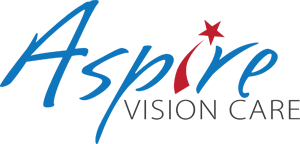
Now that a couple of years have passed since the start of the COVID-19 pandemic, researchers have gotten a clearer picture of the impact that online schooling has had on children’s eyes.
Not only have myopia cases increased, but more children are experiencing symptoms of eye strain and convergence insufficiency due to extended screen time.
Below, we explore what eye strain and convergence insufficiency are, and how vision therapy can help counteract the negative effects of online learning.
Symptoms of Digital Eye Strain
Prolonged use of digital devices like computers or smartphones can cause a condition called computer vision syndrome, also known as digital eye strain. This condition affects around 50% of adults and children.
Symptoms of digital eye strain include:
- Sore eyes
- Blurred vision
- Neck and shoulder pain
- Headaches
Children who complain of any of these symptoms should have their eyes evaluated by a developmental optometrist to ensure that vision problems aren’t exacerbating their symptoms.
What is Convergence Insufficiency?
Normally, when your eyes focus on a very near object, like a pencil near your nose, they must point slightly inwards to see a unified and clear image.
With convergence insufficiency, the eyes aren’t able to work in unison to point inward. Instead, one eye may point outward when trying to focus on a near object, leading to blurred or double vision.
Children with convergence insufficiency may struggle to perform visually demanding near tasks like reading and homework. In fact, many children who have vision-related learning problems are often misdiagnosed as having learning disabilities.
How Does Screen Time Lead to Eye Strain and Convergence Insufficiency?
Experts at Wills Eye Hospital recently studied the correlation between prolonged screen time and its effects on children’s eyes. They surveyed 110 students aged 10-17 who attended classes online. Prior to the beginning of online sessions, the students all had healthy vision.
The researchers discovered that the number of hours spent in front of a screen directly correlated to the likelihood of developing digital eye strain and convergence insufficiency. More than half of the students experienced symptoms of both visual conditions, with 17% of cases being severe convergence insufficiency.
These important and timely findings should alert parents to the risks that come with online learning, and encourage them to find solutions and take preventative measures to keep their kids’ eyes healthy. Fortunately, that’s where vision therapy comes in.
How Can Vision Therapy Help?
Vision therapy trains the eyes and brain to work together efficiently to resolve a wide range of visual dysfunctions.
Restoring healthy binocular vision is the goal for children with convergence insufficiency, and vision therapy is a primary treatment for accomplishing that.
According to the National Eye Institute, most children with convergence insufficiency experience significant improvement after just 12 weeks of vision therapy.
Vision therapy can also be effective for treating symptoms of digital eye strain in children. According to the Optometrists Network, a free and extensive online library for eye care, vision therapy can relieve symptoms of digital eye strain by strengthening the visual system.
To learn more about the benefits of vision therapy or to schedule your child’s functional visual evaluation, contact Aspire Vision Care today!
Aspire Vision Care offers vision therapy to patients from Round Rock, TX, Pflugerville, Cedar Park, and Georgetown, Texas and surrounding communities.
Q: What is a functional vision evaluation?
- A: A functional visual evaluation assesses a multitude of visual skills that normally aren’t tested in standard eye exams or vision screenings. Some examples of those visual skills include convergence, eye tracking and teaming, visual processing, eye movement, focusing, eye alignment and accommodation flexibility.
Q: Who is a candidate for vision therapy?
- A: Children and adults who have varying degrees of visual dysfunction are ideal candidates for vision therapy. Many patients may not be aware of problems with their visual systems but suffer from symptoms like headaches or dizziness, which may be rooted in their vision. Children with learning problems or any visual symptoms may benefit from a customized vision therapy program.

